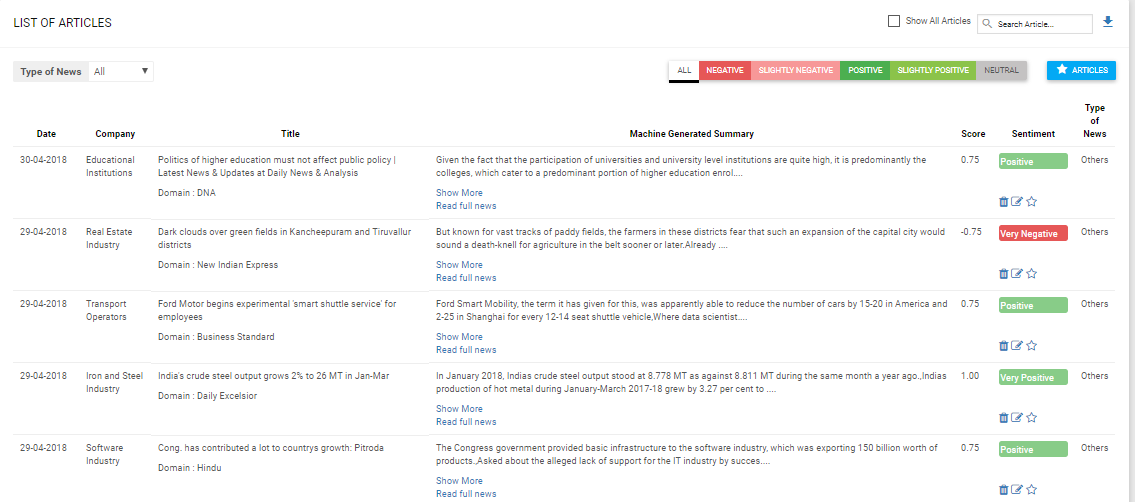- Sentiment analysis of News articles in NEWSRATOR
Before the era of Internet, the only way for an organization to track its reputation in the media was to hire someone for the specific task of reading newspapers and manually compiling lists of positive, negative and neutral references to the organization. Today, many newspapers are published online. This opens up the possibility of automatically detecting positive or negative mentions of an organization in articles published online, thereby dramatically reducing the effort required to collect this type of information. To this end, Organizations are becoming increasingly interested in acquiring fine sentiment analysis from news articles.
Fine-grained sentiment analysis is an extremely challenging problem because of the variety of ways in which opinions can be expressed. News articles present an even greater challenge, as they usually avoid overt indicators of attitudes. However, despite their apparent neutrality, news articles can still bear polarity if they describe events that are objectively positive or negative.
Our product, Newsrator, employs state-of-the-art models to retrieve entity and related industry news, generate a summary of the huge article, identify the type of news and most importantly, assign a sentiment based on the article.
- Sentiment Analysis of Social media comments in SOCIOMETER
Understanding the sentiment in regard to a specific campaign or time period can underscore the public’s feelings about it and where to go from there. For example, a study wanted to uncover the public’s sentiment about car manufacturers in the automobile industry. They decided to use sentiment analysis of Twitter to get their results. Using this kind of data, consumers and other businesses can discern that Audi has the highest rate of customer satisfaction on Twitter. This is just one applicable use of sentiment analysis within social media monitoring, and the information is valuable not only to the manufacturers, but to public consumers as well.
Our product, Sociometer, does Sentiment modelling on the unstructured data flowing from social media websites like Facebook and Twitter. The UI consist of graphical representation of the sentiment analysis of people who have posted or commented on a particular company, e.g. a bank, as shown in the above screenshot.
Challenges with Text Sentiment Analysis
Sentiment analysis can be tricky because of the complicated data such as sarcasm, irony, multiple languages, social media jargon, writing local languages in English, images, and video posts.
If you don’t have a truly accurate sentiment analysis service in place, you may be formulating and adjusting your marketing campaigns based on incorrect data.
Deep learning can swoop in here to overcome above challenges which we will explore in subsequent articles.
Follow
